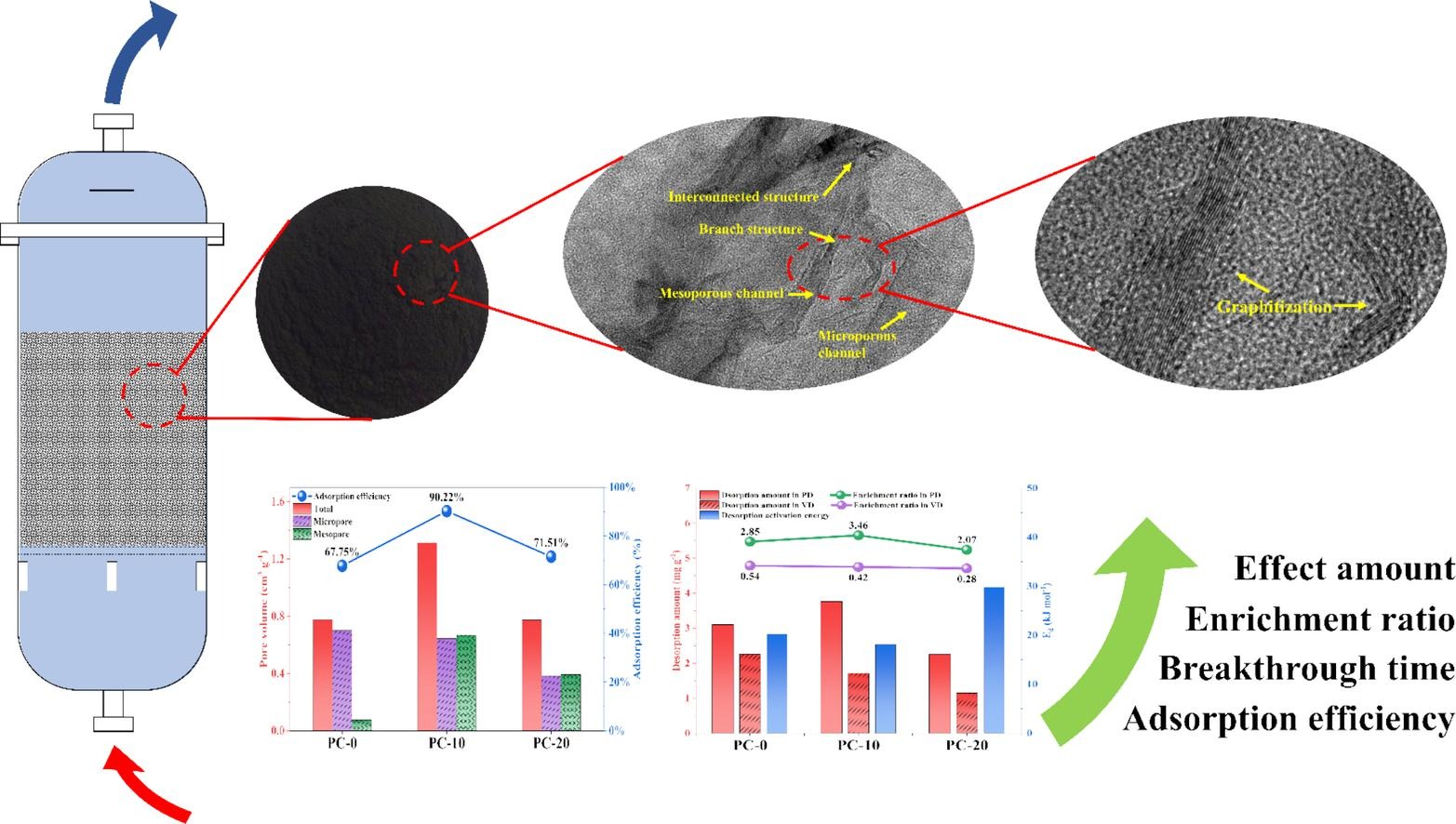The construction of ultrahigh efficiency benzene molecular transport channel and application on pressure swing adsorption
发布时间:2025-04-10
点击次数:
DOI码:10.1016/j.apsusc.2025.162322
所属单位:中南大学
发表刊物:Applied Surface Science
关键字:Activated carbon; Adsorption efficiency; Benzene; Dynamic adsorption; Petroleum coke; Pressure swing adsorption
摘要:Benzene is a harmful VOC, which usually form a certain concentration of gas. The transport of benzene molecules in the pore structure is the key to benzene gas treatment. Here we report an effective synthesis of petroleum coke-based porous carbon with ultrahigh efficiency benzene molecular transport channels. These mesopore-micropore channels can effectively improve the transport of benzene molecules in the interior of pore structure, and the graphitization also enhances the adsorption for benzene. The results shows that the adsorption efficiency of PC-10 with the graphitized mesopore-micropore channels reaches 90.22 %, which is 22.47 % higher than that of PC-0. Moreover, the complete structure of graphitized mesopore-micropore channel was observed, which is constituted of mesoporous channel, branch structure, cavity structure, microporous channel, and graphitized interior surface. Compared with microporous carbon in PSA, the breakthrough time of PC-10 is extended by 22 % and the effective amount is saved by 25 %. Due to the co-effect of low desorption activation energy and micropore-mesopore channels, the enrichment ratio of PC-10 reaches 3.46 in PD step, which is 21 % higher than that of microporous material. Our study provided an effective strategy for the synthesis of porous materials, and developed its application on PSA for benzene.
论文类型:期刊论文
论文编号:162322
卷号:688
是否译文:否
发表时间:2025-04-10
收录刊物:SCI
发布期刊链接:https://www.sciencedirect.com/science/article/pii/S0169433225000352?via%3Dihub
上一条: Solvent-free one-step simple synthesis of N, O-doped microporous carbon using K2CO3 as an activation agent and their application to CO2 capture: Synergistic effect of pore structure and nitrogen–oxygen functional groups
下一条: Mechanistic effects of surface functional groups on porous carbons for hydrogen purification: Multi-scale simulation perspective of competitive adsorption behavior

